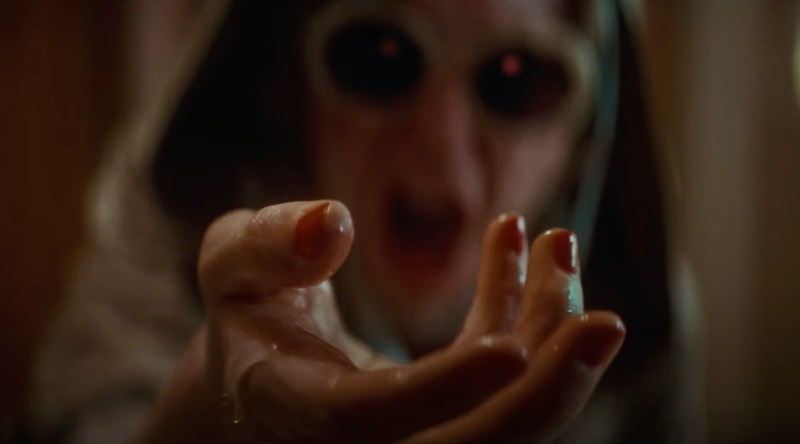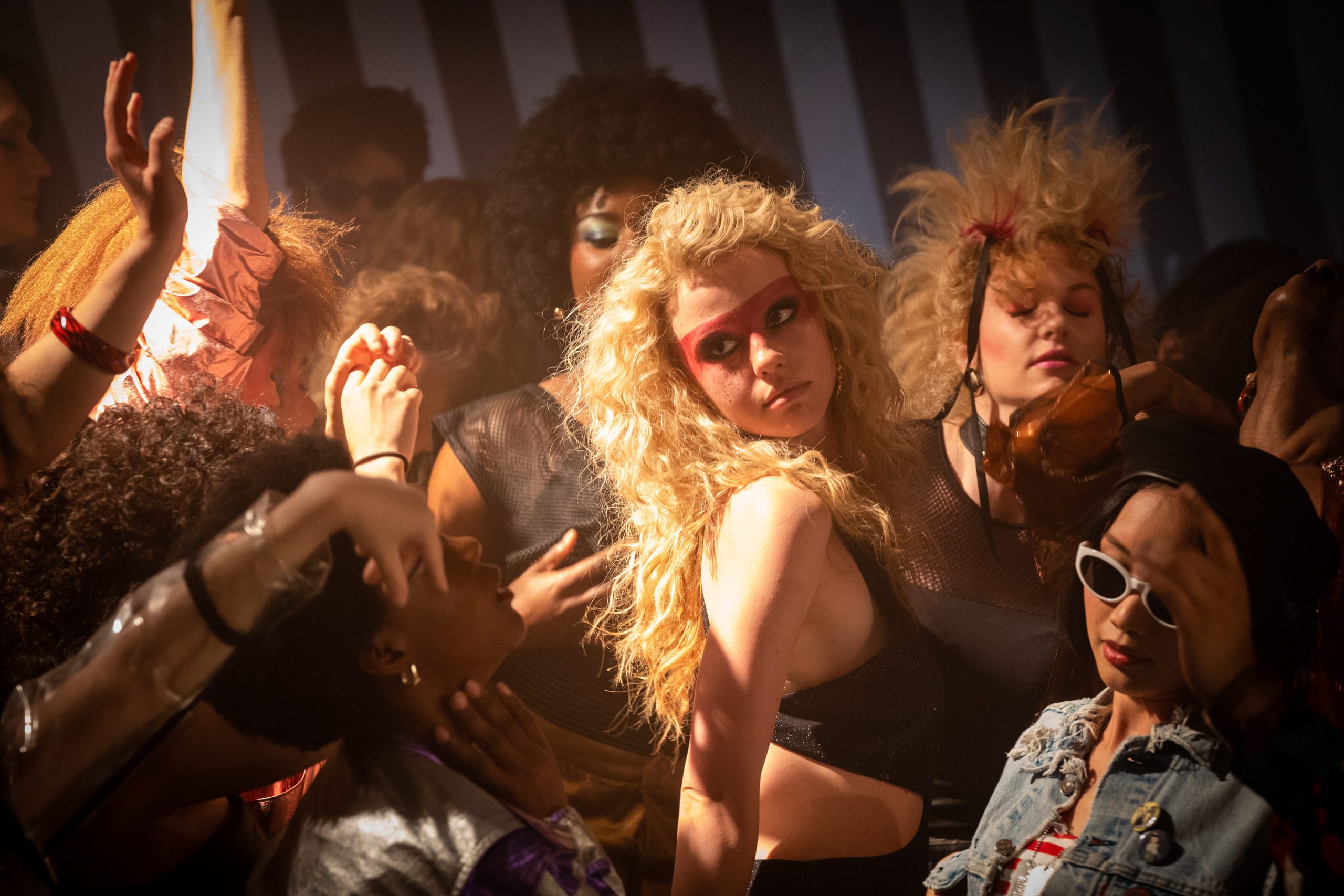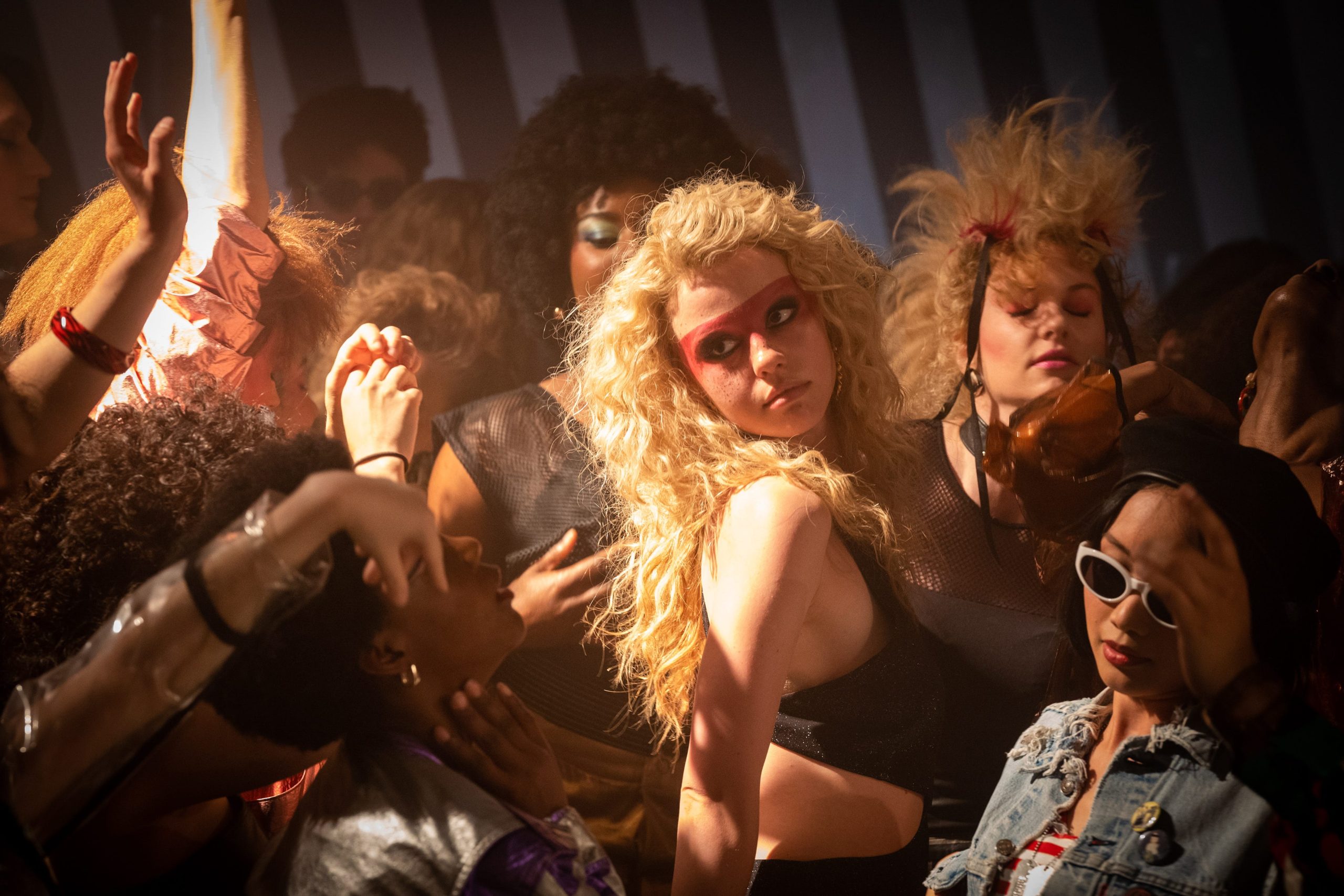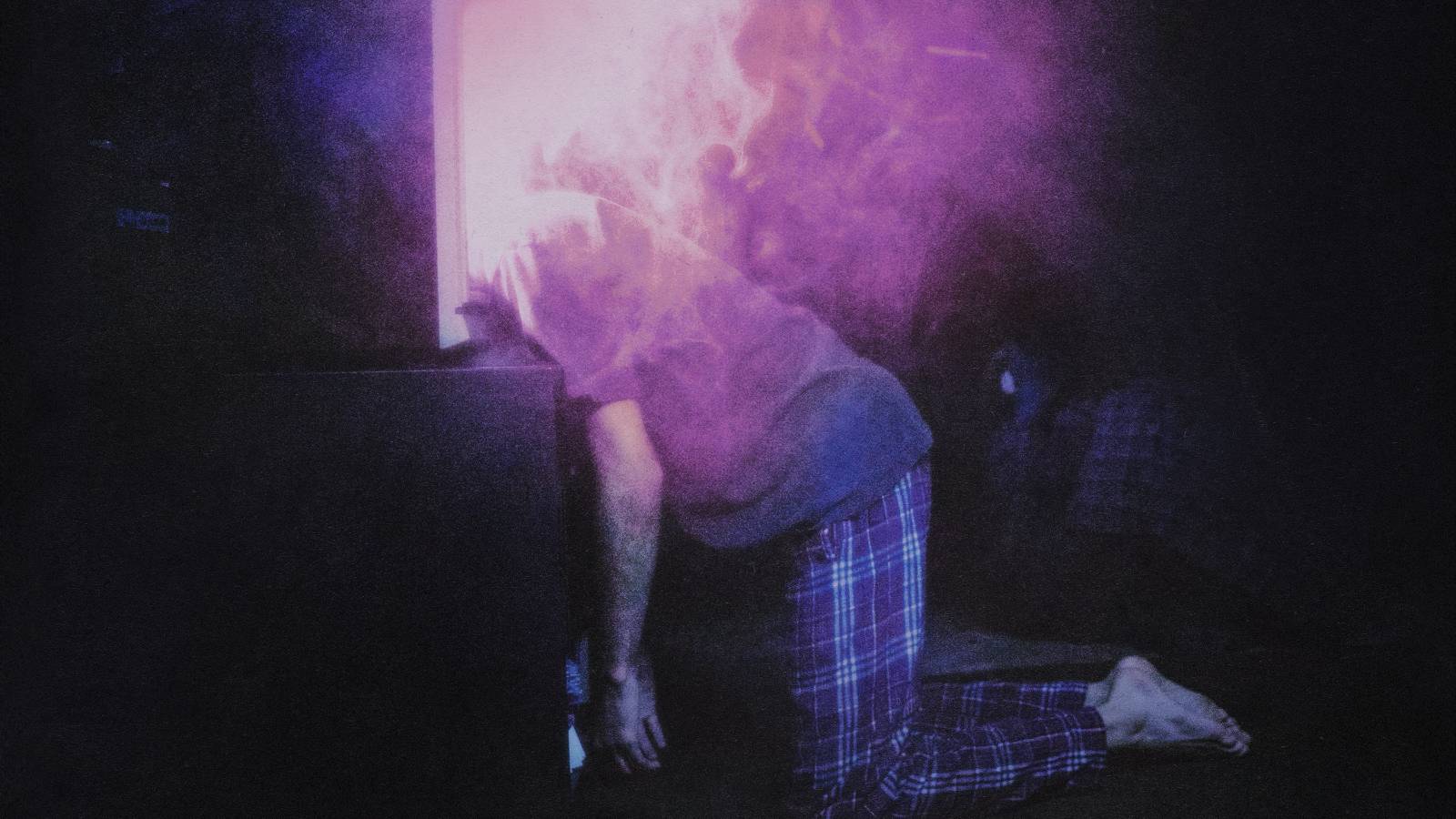Reviews
‘I Saw the TV Glow’ Review – A Personal Portrait of Dysphoria and Surreal Horror

Writer/Director Jane Schoenbrun’s feature debut, We’re All Going to the World’s Fair, captured the isolating nature of online culture via creepypasta horror through non-narrative, visual storytelling. Schoenbrun continues that core theme of dysphoria in their sophomore effort, I Saw the TV Glow, now armed with a bigger budget that allows the filmmaker to get even more personal while evolving their voice and visual style to an intoxicating degree. I Saw the TV Glow offers a layered and authentic portrait of identity, wrapped in ’90s nostalgia and surreal imagery that embeds itself deep into your psyche.
I Saw the TV Glow charts the life of Owen (Justice Smith) over multiple decades, initially introduced as an early teen (Ian Foreman) in 1996. Owen is a dysphoric and friendless outcast until he bumps into a slightly older student and fellow outcast, Maddy (Brigette Lundy-Paine), at his high school. The pair quickly bond over the young adult supernatural series “The Pink Opaque,” which follows Tara (Lindsey Jordan) and Isabel (Helena Howard) as they fight monsters of the week with their psychic bond, a clear cross between “Buffy the Vampire Slayer” and “Are You Afraid of the Dark?”
The anthology horror series takes over their lives, becoming an obsessive solace from their turbulent home lives. That’s complicated by Owen’s strict dad (an unrecognizable Fred Durst) and distracted, ailing mom (Danielle Deadwyler). As Owen and Maddy struggle to find their place in the world and their identity, “The Pink Opaque” begins to blur the lines of reality.
While not as narratively challenging as Schoenbrun’s debut, I Saw the TV Glow operates on emotion and visual storytelling over a conventional narrative. It heightens the effectiveness of the eerie, potent imagery that pervades Owen’s life, and it showcases Shoenbrun’s incredible eye for framing and composition. The baddies from “The Pink Opaque” bleed over into the real world like a lucid nightmare. Schoenbrun utilizes a variety of techniques, textures, and influences to capture the fictional series’ monsters here, from a Georges Méliès by way of Smashing Pumpkins stop-motion moon villain, Mr. Melancholy, to a nightmarish ice cream truck engulfed in vibrant neon smoke.

It’s a ’90s kid fever dream of a movie. A familiar yet distant realm where Fruitopia vending machines fill the school cafeteria. Where familiar ’90s pop culture faces like Durst and Buffy alum Amber Benson, briefly appearing as another student’s mom, appear to capture the decade’s vibe further. Where the crackling haze of VHS seeps over on screen, not just with the tapes that Maddy dutifully makes for Owen but also in the villains who escape from their fictional realm. It not only creates a specificity for Schoenbrun’s deeply personal examination but a relatable touchstone of youth- a period where we often form our identities based on our pop culture obsessions and cling to them like lifeboats in tempestuous waters.
Through Owen and Maddy, Schoenbrun fearlessly gets even more personal. Maddy, whose rigid body language matches gritted, angry bursts of speech and eye contact avoidance, longs to escape the oppressive suburbs. Owen’s inner struggles are even more complicated as an asexual trapped for decades by societal expectations and paralyzing fear from taking the next step toward self-actualization. Smith nails Owen’s dissociative persona, a detached loner who buries their true self so deeply as they drift through a surreal world. But it’s Lundy-Paine’s raw turn as Maddy that nearly steals the film, delivering a soul-baring performance. Their glimpses of vulnerability are heartrending, compounded by pleading monologues delivered with poignant authenticity.
Schoenbrun delivers a singular vision of arthouse horror that entrances for its fevered dream style and insanely cool imagery. I Saw the TV Glow is relatable for any ’90s kid who ever felt like an outsider and whose closest friends were the ones found on TV. There’s something rare and special about a filmmaker so willing to get this personal and to do so with such a confident grasp of visual storytelling. More than just an assured piece of arthouse horror surrealism, it’s a stunning and bittersweet reminder that you’re not alone, fictional friends or otherwise.
I Saw the TV Glow is now playing in select theaters.
Editor’s Note: This Sundance review was originally published on January 21, 2024.


Movies
‘Cuckoo’ Review – High-Concept Horror Movie Gets Weird, Quirky, and Playful

Writer/Director Tilman Singer continues his streak of experimental high-concept horror with his sophomore effort, Cuckoo. The filmmaker boldly marches to the beat of his own drum, examining heady themes of grief, reproduction, and gendered expectations through inventive, playful horror. That Cuckoo plays it fast and loose with details and plotting means that this body horror entry will likely polarize, but lovers of weird cinema will find a lot of charm in Singer’s latest.
After a peculiar cold open that won’t make sense until much later in the film, Cuckoo introduces seventeen-year-old Gretchen (Hunter Schafer). The moody teen wears her disdain plainly as she’s dragged by her father, Luis (Marton Csókás), stepmother Beth (Jessica Henwick), and her mute 7-year-old stepsister Alma (Mila Lieu) to the Bavarian Alps resort where Alma was conceived. Gretchen’s deep in the throes of grief over the loss of her mother, whose memory she clings to by calling their old phone and leaving messages.
She feels unwanted by her dad’s new family, and the creepy German resort owner, Mr. König (Dan Stevens), makes her feel even more uncomfortable despite giving her a job at the resort front desk. Gretchen is so unsettled by Mr. König that she ignores his desperate pleas to be home before dark, leading to bizarre encounters with a stalking, shrieking woman.

Singer is less interested in plotting than atmosphere, horror freak-outs, and his protagonist’s volatile emotional state. More specifically, how Gretchen’s internal journey parallels what’s happening at the resort. Schafer’s Gretchen initially comes across as the typical angsty teen, but it soon becomes apparent that she’s masking terrible pain made worse by feeling like an outsider. Gretchen wants nothing more than to return home to the US, but Singer throws every possible obstacle her way to prevent that, including a massive amount of bodily trauma that forces the teen into survival mode with handicapped odds. The worse the stalking and weird aural encounters get, the more isolated Gretchen becomes, as everyone around her assumes she’s acting out.
It’s the performances that carry Cuckoo. Singer focuses on what’s important to his themes and overarching story and discards anything that he deems superfluous in a way that will drive plot-focused audiences to frustration. Supporting players get forgotten and left behind frequently when shit hits the metaphorical fan. Certain plot beats get ignored entirely for the sake of forward momentum. Thanks to a poignant, committed turn from Hunter Schafer, who deftly navigates Singer’s quirky sense of humor while nailing the emotional intensity in the same breath, Cuckoo becomes far more accessible despite its weird narrative shorthand.

Then there’s the villainous Mr. König. Dan Stevens is always at his most fascinating when sinking his teeth into peculiar character roles, and he has ample room to flex his quirky character actor muscles with Mr. König. He’s the perfect disarming foil at first until the shackles come off, and he gets to let loose in thrilling ways. Of course, Mr. König may be the film’s ultimate monster, but Cuckoo has an actual bizarre creature, and the film’s title holds the key. Don’t expect Singer to unveil any firm details about it until late in the runtime, though, opting instead to let viewers discover the zaniness when he’s ready to unleash it. But what I will tease is that vaginal discharge gets employed to ominous, skin-crawling effect here.
There’s inventive worldbuilding on display that sets this high-concept horror movie apart and a few intense horror cat-and-mouse scenes that deliver palpable tension. But Singer approaches it with a playful sense of humor that only further nudges Cuckoo into the realm of weird cinema. It’s so refreshingly unconventional and unpredictable in every way, right down to its raucous, entertainingly silly finale, that it’s hard to care about all of the plot that gets discarded along the way. It certainly helps that Cuckoo belongs to Schafer and Stevens, too.
Cuckoo screened at SXSW and will release in theaters on August 9, 2024.
Editor’s Note: This SXSW review was originally published on March 15, 2024.














You must be logged in to post a comment.